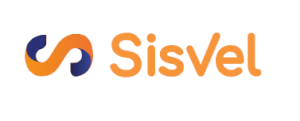Sisvel Announces the Launch of its MIOTY LPWAN Licensing Program
Fraunhofer IIS and Diehl are working together under the brand name MIOTY in the area of wireless technology for low power wide area networks (“LPWAN”). MIOTY technology is based on the protocol family Telegram Splitting Ultra Narrow band (“TS-UNB”) of the ETSI standard TS 103 357 (“TS-UNB Specification”).
Sisvel is organizing this licensing platform to make MIOTY technology accessible on fair, reasonable, and non-discriminatory terms and conditions by offering a royalty-bearing, non-transferable, non-assignable, non-exclusive license, with no right to grant sublicenses, under patents essential to the TS-UNB Specification. In addition, Sisvel offers a license to patents complementary to MIOTY implementations.
Further information about the terms and conditions of Sisvel’s MIOTY licenses are available on Sisvel’s website https://www.sisvel.com/licensing-programs/wireless-communications/mioty/introduction. For more details you may contact Sisvel at the following e-mail address MIOTY@sisvel.com.
The MIOTY Licensing Platform remains open to additional patent owners with relevant patents. Thus, Sisvel invites all parties that have patents or patent applications they believe to be essential to the protocol family TS-UNB of the ETSI standard TS 103 357 to contact Sisvel and submit those patent(s) for an evaluation by the program’s designated, independent evaluators.
About Fraunhofer IIS
The Fraunhofer-Gesellschaft is the leading organization for applied research in Europe. Its research activities are conducted by 74 institutes and research units at locations throughout Germany. The Fraunhofer-Gesellschaft employs a staff of more than 28,000, who work with an annual re-search budget totaling more than 2.8 billion euros.
The Fraunhofer Institute for Integrated Circuits IIS is one of the world’s leading application-oriented research institutions for microelectronic and IT system solutions and services. It is the largest of all Fraunhofer Institutes. Research at Fraunhofer IIS revolves around two guiding topics:
In the area of “Audio and Media Technologies”, the institute has been shaping the digitalization of media for more than 30 years now. Fraunhofer IIS was instrumental in the development of mp3 and AAC and played a significant role in the digitalization of the cinema. Current developments are opening up whole new sound worlds and are being used in virtual reality, automotive sound systems, mobile telephony, streaming and broadcasting.
In the context of “cognitive sensor technologies”, the institute researches technologies for sensor technology, data transmission technology, data analysis methods and the exploitation of data as part of data-driven services and their accompanying business models. This adds a cognitive component to the function of the conventional “smart” sensor.
Nearly 1,100 employees conduct contract research for industry, the service sector and public authorities. Founded in 1985 in Erlangen, Fraunhofer IIS has now 15 locations in 11 cities: Erlangen (headquarters),
Nuremberg, Fürth, Dresden, further in Bamberg, Waischenfeld, Coburg, Würzburg, Ilmenau, Deggendorf and Passau. The budget of 170 million euros is mainly financed by projects. 26 percent of the budget is subsidized by federal and state funds.
Detailed information on: www.iis.fraunhofer.de/en
About Diehl Metering
Diehl Metering is a corporate division of the Diehl Group, headquartered in Nuremberg. With a total annual turnover of 3.75 billion euros, the technology company employs around 17,200 people worldwide. The corporate division Metering supplies solutions for the intelligent use of water, thermal energy, gas and electricity.
Diehl Metering provides smart metering solutions to utilities companies through the intelligent networking of various metering devices into larger data platforms. These solutions offer transparency for utilities and municipalities, and enable considerably increased efficiency in reading, billing and service processes. Diehl Metering’s customers are also able to benefit from real-time effects such as early recognition of leaks and the optimisation of distribution networks through intelligent information regarding prompt adjustment of the offer to suit actual needs.
With Diehl Metering utilities are already perfectly equipped for smart metering as an important component of smart city concepts. Thanks to more than 20 years of experience with the company’s own radio technology, Diehl Metering has at its disposal excellent expertise in communications within the Internet of Things. The MIOTY LPWAN technology has been developed jointly by Fraunhofer IIS and Diehl Metering.
For further information, please visit www.diehl.com/metering
About Sisvel
Sisvel is a world leader in fostering innovation and managing intellectual property. The Group identifies, evaluates and maximizes the value of IP assets for its partners around the world, providing firms with a revenue stream which can be reinvested in innovation for the generation of future revenues. Founded in 1982, the Group is headquartered in Luxembourg and has subsidiaries in China, Germany, Italy, Japan, Spain, the United States and the United Kingdom. The Group has a long history of managing successful patent portfolios including those related to the audio compression standards known as MP3 and MPEG Audio, as well as broadcasting and receiving of digital terrestrial television standards maintained by the DVB Project. Sisvel currently operates patent pools and joint licensing programs in the fields of mobile communication; wireless local area networking 802.11; digital video broadcasting; recommendation engine and broadband access to data networks.
For additional information, please visit: www.sisvel.com.
View source version on businesswire.com: https://www.businesswire.com/news/home/20200414005501/en/
Website: https://sisvel.com
Contact
Media Contact Sisvel Group
Giulia Dini
Communications Manager
+34 93 131 5570
giulia.dini@sisvel.com
This news is a press release provided by Sisvel International S.A..



